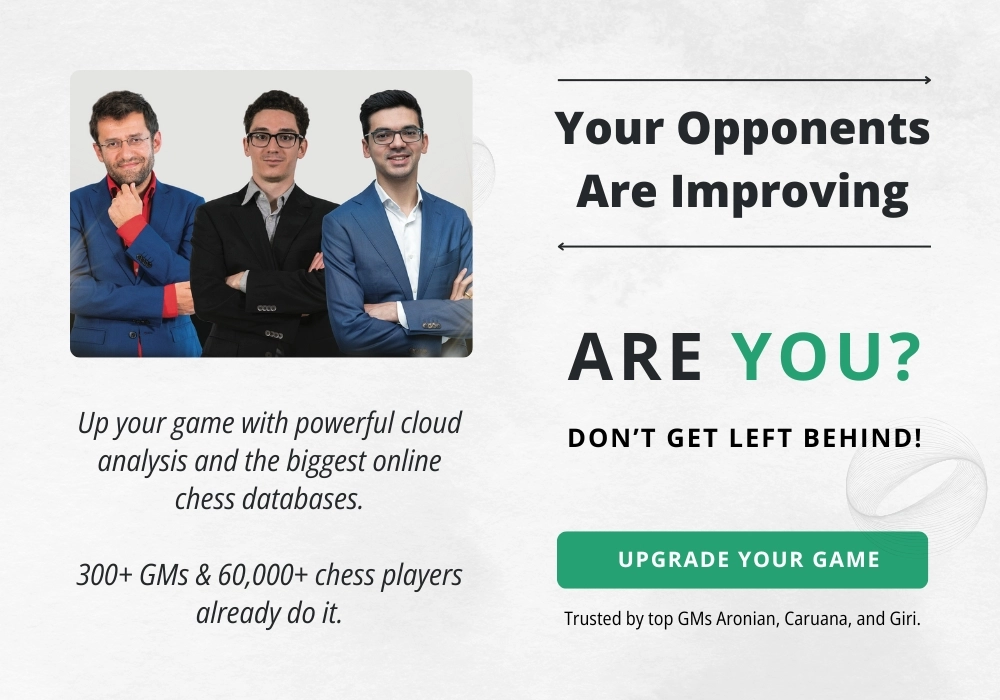
How to Learn Chess Openings the Right Way: A Step-by-Step Guide
Opening preparation is one of the most rewarding—and misunderstood—parts of chess improvement. Too often, players fall into the trap of blindly memorizing lines without understanding the ideas behind them. If you're serious about becoming better at chess, learning an opening the right way can give you a major edge, especially in faster time controls where your early moves set the tone for the whole game.
In this guide, we’ll walk you through a step-by-step approach to learning chess openings, tailored for beginners and intermediate players. We'll also show you how to use tools like Chessify’s online database of over 10 million professional games to make your opening study more effective and structured.
Step 1: Choose One Opening to Focus On
Instead of trying to learn several openings at once, start with just one. Pick an opening that suits your playing style and level.
If you’re a beginner or new to studying theory, it’s best to stick to classical openings that follow strong principles of development and control of the center. Some great starting points include:
-
Ruy Lopez – A solid and time-tested opening for White, great for learning positional chess.
-
Queen’s Gambit – One of the most instructive openings, perfect for players looking to understand pawn structures and strategic planning.
-
Sicilian Defense – Ideal for Black players who want counter-attacking chances against 1.e4.
Step 2: Explore the Main Lines Using a Game Database
Once you’ve chosen an opening, you need to understand how it's actually played in real games.
Rather than learning from a random YouTube video or blog list of "traps," it's better to study professional-level games in your chosen opening. This shows you the typical move orders, middlegame ideas, and how strong players handle various positions.
With Chessify’s online database, you can:
- Access over 10 million tournament games played by titled players.
- Search for any opening position and see:
- The most commonly played moves.
- Win/draw/loss percentages.
- Number of games played.
- Opening popularity across rating levels.
This data helps you understand:
- What lines are most played at the top level?
- Which lines tend to score well?
- How grandmasters respond to common deviations.
It gives you context, not just moves.
Step 3: Identify Top Players Who Specialize in the Opening
Every major opening has a few modern or historical players who are known for using it consistently.
For example:
- The Queen’s Gambit has been a staple for players like Karpov, Petrosian, and Carlsen.
- The Najdorf Sicilian has been used extensively by Fischer, Kasparov, and Vachier-Lagrave.
- The London System is frequently used by Kamsky, Nakamura, and many top streamers.
Once you've selected an opening, search for games by these players in the Chessify game database. Watch how they:
- Navigate the early middlegame.
- React to the sidelines or less-popular replies.
- Maneuver their pieces and execute plans.
You’ll begin to see that every strong opening has a "language"—a set of recurring themes, pawn breaks, tactical tricks, and strategic plans.
Step 4: Understand Key Ideas, Not Just Moves
One of the biggest mistakes beginners make is focusing on rote memorization.
You’ll never out-memorize a database, and you don’t need to. Instead, your goal should be to internalize key concepts behind the opening.
Use this checklist when studying any line:
- What is each side trying to achieve?
- What are the main pawn breaks or structural changes you should watch for?
- What squares are important for your pieces?
- What does a typical middlegame look like in this opening?
Use the Chessify database to look through complete games, not just the first 10 moves. This gives you a sense of how the opening flows into the middlegame and what plans emerge naturally.
Step 5: Practice the Opening in Your Own Games
Learning theory is just one part of mastering an opening. You need to test it in your own games, whether that’s online blitz or classical over-the-board events.
Track your progress:
- How often are you getting into your preferred lines?
- Where do opponents deviate?
- What positions give you the most trouble?
If you use Chessify, you can connect up to 5 Lichess accounts and have all your games synced automatically to your personal database. This saves time and makes it easier to track your opening success rate across formats.
Step 6: Refine with Engine Analysis and the Mega Database
After playing a set of games with your opening, it’s time to analyze and refine.
Here’s a workflow to follow:
- Import your games into Chessify or connect your Lichess account directly.
- Identify the positions where you felt lost or made inaccurate decisions.
- Use Stockfish 17.1 or any of our 10 top engines to evaluate those positions and compare with your own thoughts.
- Cross-reference the position with the 10M+ Chessify game database to see how top players handled it.
Ask yourself:
- Where did I reach a new position where I didn't know what to play?
- Was there a better plan I missed?
- Is this line used at a high level?
Doing this regularly builds depth, not just breadth, in your understanding.
Bonus Tips for Accelerating Opening Mastery
- Create a small opening notebook: Write down key lines, plans, and ideas—not just move sequences.
- Use spaced repetition tools to memorize tricky variations.
- Watch model games: Pick 5–10 of your favorite games in the opening and replay them until the ideas become intuitive.
- Play thematic positions against engines or friends: Set up typical middlegames from the opening and test your ability to play them.
Final Thoughts: Make the Opening Yours
The real test of an opening is not how much you’ve memorized—it’s how confidently and comfortably you can play the resulting positions.
Learning an opening is a process:
- Study its theory.
- Understand its strategy.
- Apply it in real games.
- Analyze your results.
- Refine your approach.
With Chessify’s integrated tools, from the vast professional game database to hourly auto-syncing of your Lichess games, mastering new openings becomes less about guesswork and more about structured improvement.
If you’re ready to upgrade your opening prep, start your 7-day free trial on Chessify and get full access to our 10 million+ game database and 10 MN/s cloud engines — everything you need to build your repertoire with data, strategy, and confidence.



